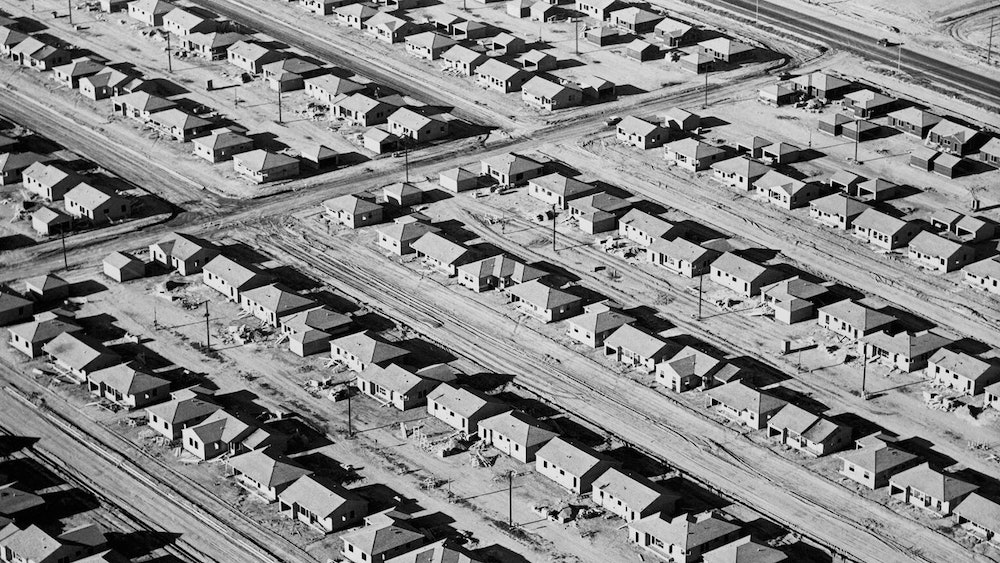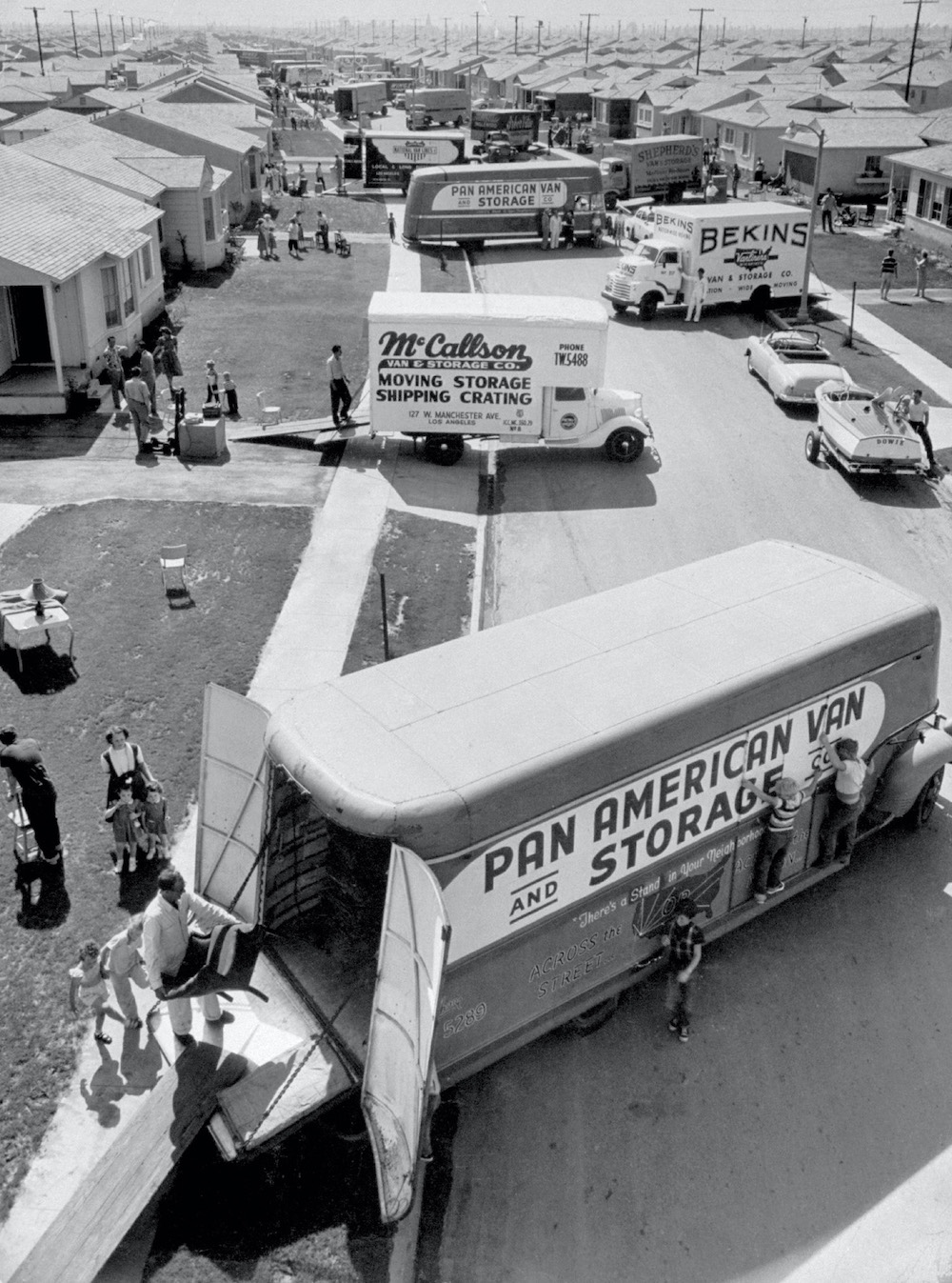In a 1953 photograph for a spread in LIFE magazine on LA County’s city of Lakewood, a bird’s-eye view looks down onto a newly paved suburban street. The street is lined with moving trucks as far as the eye can see as family after family busily unpack their belongings. The burst of activity counterbalances the monotonous sprawl of two/three bedroom homes that fill the frame. The exuberant families are unfazed by the severity of the surrounding tracts, where telephone poles stand in place of any tree. While today we know that the photograph was staged, it is not altogether misleading. Within the first month of opening, 200,000 people came to admire Lakewood’s accessibly priced model homes. By the time this photograph was taken, the self-proclaimed “City of Tomorrow, Today,” boasted an incredible 17,500 new homes—making Lakewood one of the largest developments of its time. As many as 50 homes were sold per day with a record 107 being sold in a single hour; people wanted into Lakewood.
The subdividers responsible for the project broke ground in February 1950 and proceeded at breakneck speeds. A new home was completed every 7 1/2 minutes, some 40 to 60 houses a day, with a record of 110 houses erected in a single day. To entice future homeowners, the developers centered Lakewood’s 17,500 private, single-family homes around what was briefly the largest mall in America, surrounded by an unprecedented 10,000 free parking spots. The neatly gridded suburban tract reflected the burgeoning ideals of the midcentury era. As low-interest FHA loans made buying a home possible for white middle-class suburbanites, residential developments like Lakewood ballooned. With well-paying jobs in aerospace at either the nearby Douglas or Hughes plants, the community offered an ideal locale for young families seeking a secure place to raise their families. However, the midcentury American dream fortified by the proliferation of low-interest FHA-backed mortgages perpetuated racial divisions; the United States government granted less than 2% of FHA loans to people of color.

Photograph by Bettmann/Corbis.
When Joan Didion published her 1993 New Yorker article “Trouble in Lakewood,” the racial demographics of Lakewood had remained largely unchanged, but the communities’ stint of economic prosperity was beginning to dwindle. The self-proclaimed “City of Tomorrow, Today” could hardly have anticipated the changes to come. In 1989 alone, half of California’s aerospace workers had been laid off and only 16% of those workers would find another job over the next two years. The newly depressed city was overrun with violence; countless sexual assaults, burglaries, a pipe bombing, and numerous other felony arrests marked the community in 1993. The bucolic haven had transformed, even while residents insisted the community remained “upper-middle class.” Today’s Lakewood has suffered from the continued ebbs and flows of the market, facing lost jobs, closing malls and enduring confusion on the definition of “middle class.” A short drive to the infamous neighborhood today reveals the decaying white picket fences of the idyllic midcentury landscape. Visitors today are no longer greeted by the city’s original, cheery motto, but instead by the words: “Good Ideas Last for Generations.”











0 Comments